
Ceramic tile production process showcasing raw materials.
The primary raw materials used in ceramic tile production are clay, feldspar, quartz, and various minerals. These materials are mined and processed to remove impurities and achieve the desired composition. The raw materials are then mixed in precise proportions to form a homogeneous blend. The blended raw materials are next subjected to a forming process. In Dry Pressing, the ceramic powder mixture is pressed into a mold under high pressure to form the desired tile shape. This process is suitable for producing tiles with a consistent thickness and precise dimensions. In extrusion, the clay mixture is forced through a die to form a continuous column of clay with the desired cross-sectional shape. The column is then cut into individual tile units of the required size.
Once the tiles are formed, they undergo a drying process to remove moisture and prepare them for firing. The drying process can take place naturally by air drying or using specialized drying chambers or kilns. Care must be taken during drying to prevent warping or cracking of the tiles. Glazing is an additional step that may be performed to enhance the appearance and functionality of the tiles. Glazes, which are liquid suspensions of minerals and pigments, are applied to the surface of the tiles. This can be done by dipping, spraying, or roller application. Glazing gives the tiles a smooth, glossy, or matte finish and provides protection against stains and moisture.
The purpose of ceramic firing is to transform weak and raw ceramic clay into a glassy, durable, crystalline and resistant form. This operation is done in a special furnace. Ceramic and tile firing furnaces have become more efficient over many centuries. These furnaces are sometimes tunnel-shaped and sometimes rotating. The temperature of the furnace in which the firing is done causes serious changes in the clay and creates and shapes its glaze. Usually, the firing method is that first the oven is heated to about 1000 degrees Fahrenheit in a few hours and then the raw ceramic is placed in it.
At a thermal temperature between 1900 and 2400 degrees Fahrenheit, first the ceramic color brick material is baked and in the next step, its glaze is formed. The higher the temperature, the stronger and more durable the ceramic will be. This process usually lasts between 3 and 8 hours. However, with the growth of technology, this time has decreased. In cases where the temperature is low, the ceramic glaze does not form well. If the steps of cooling the ceramic are done gradually and slowly, the quality of the ceramic will be much better.
Ceramics are glazed and polished before heating to produce a product with a coating that reduces porosity and has a smooth and often painted surface. Many ceramics contain a mixture of covalent and ionic bonds between atoms, the resulting product may be crystalline, semi-crystalline or glassy. The desired form is dried and heated in an oven like oven. The heating process provides energy to form new chemical chains (transformation to glass) and sometimes new minerals (such as mullite in porcelain clay in porcelain heating). Waterproof, decorative, or functional glazes may be added before firing, or may need to be added after firing, which is more common.
The dried or glazed tiles are fired in a kiln at high temperatures. The firing process involves subjecting the tiles to controlled heat, typically ranging from 1,000 to 2,500 degrees Fahrenheit (537 to 1,371 degrees Celsius). Firing transforms the raw materials into a hardened, durable ceramic structure. The firing process also affects the color, strength, and other properties of the tiles. After firing, the tiles undergo inspection and quality control measures. Any defective tiles are identified and discarded. The tiles are inspected for dimensional accuracy, surface defects, color consistency, and other quality parameters.
The fired tiles may undergo cutting to achieve precise dimensions or specific shapes. Edge treatment, such as chamfering or beveling, can also be performed to give the tiles a finished appearance and facilitate installation. The final step in the production process is packaging. The tiles are carefully stacked, usually separated by protective layers, and packaged in boxes or pallets for storage and transportation. The body of the tiles is usually harvested from different soils in different conditions and from different mines. These tiles and ceramics are made from different raw materials based on their application and role, which include: plastic raw materials, fillers, and melting aids.
-
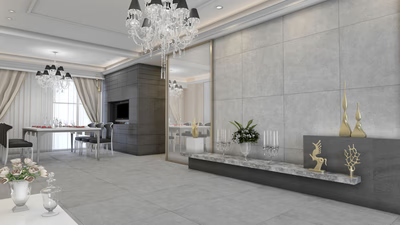
The price and quality of ceramic tiles are influenced by the materials used and the manufacturing processes. Higher-quality tiles, made from premium clay and advanced techniques, tend to be more durable and visually appealing. Thicker tiles are generally more robust, while thinner options may be more affordable but less durable. The surface finish, ranging from matte to glossy, also affects pricing; high-quality finishes ensure longevity and resistance to stains. Intricate designs and unique colors can increase costs due to specialized production methods. While aesthetic appeal is important, buyers should prioritize quality over price to avoid wasting money on inferior products. Ceramic tiles are a cost-effective flooring option for kitchens due to their durability and low maintenance costs compared to alternatives like vinyl or wood. For construction manufacturers or suppliers, purchasing directly from factories can lead to cost savings and a wider selection of products.
By eliminating middlemen, buyers can access better prices for ceramic tiles. Established brands often command higher prices due to their reputation for quality, but newer brands may offer competitive options without compromising on standards. Overall, understanding the factors that influence tile pricing can help consumers make informed decisions.
-
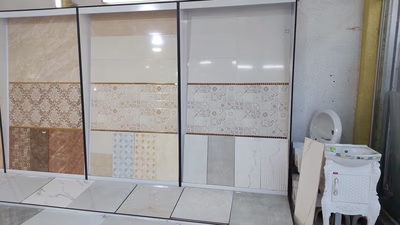
Ceramic tiles are made from clay and inorganic materials, fired at high temperatures, making them durable and versatile for various applications. They are commonly used in residential and commercial settings for flooring and wall coverings due to their aesthetic appeal and ease of maintenance. The manufacturing process involves shaping clay into tiles and firing them in kilns, resulting in a strong product that is resistant to water, stains, and scratches. Ceramic tiles can last many years with proper care, making them a popular choice for both functional and decorative purposes. They come in various shapes, sizes, colors, and patterns, offering extensive design options. Glazed ceramic tiles feature a protective glass layer for added durability, while unglazed tiles provide slip resistance suitable for wet areas. The historical significance of ceramic tiles dates back to 4000 BC in Egypt, highlighting their long-standing role in architecture. Their importance extends beyond aesthetics; they also contribute to environmental health by preventing moisture penetration.
-

Ceramic tiles are versatile materials widely used in both residential and commercial settings due to their durability, moisture resistance, and aesthetic appeal. They are ideal for high-traffic areas like kitchens, bathrooms, and entryways. In addition to flooring, ceramic tiles serve as wall coverings, countertops, and decorative elements in various spaces. Their chemical resistance makes them suitable for industrial applications as well. The lightweight nature of ceramic slabs reduces the structural load on buildings while allowing for diverse design options. Digital printing technologies enable the creation of unique patterns and textures, enhancing their visual appeal. Hygienic properties further contribute to their popularity over other materials like stone or cement. With a vast array of colors and designs available, ceramic tiles can be tailored to meet individual preferences in both traditional and modern architecture.
They are also used outdoors in patios and pool areas due to their weather-resistant qualities. Overall, ceramic tiles offer a combination of functionality and style that makes them a preferred choice in construction projects across the Middle East.
-
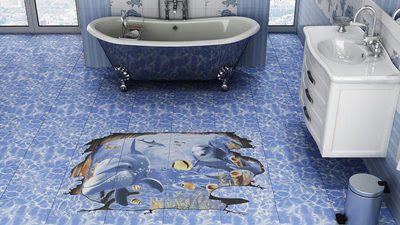
Ceramic tile production involves several key processes, starting with the selection and processing of raw materials such as clay, feldspar, and quartz. These materials are blended in precise proportions to create a homogeneous mixture. The forming process can be achieved through dry pressing or extrusion, shaping the tiles into their desired forms. After forming, tiles undergo drying to eliminate moisture, followed by glazing to enhance appearance and functionality. Glazing is applied using various methods and provides a protective finish. The critical firing process transforms the raw ceramic into a durable structure at high temperatures ranging from 1,000 to 2,500 degrees Fahrenheit. This step is essential for achieving the desired strength and color of the tiles. Post-firing, tiles are inspected for quality control, ensuring dimensional accuracy and surface integrity.
Any defective pieces are discarded before the final cutting and edge treatment processes are performed to prepare them for installation. Finally, tiles are packaged securely for transportation. The production of ceramic tiles is influenced by technological advancements that improve efficiency and quality.
-
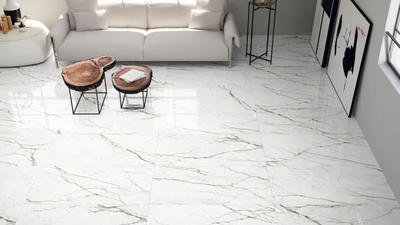
Ceramic tiles have a rich history dating back to ancient Mesopotamia around 4,000 BCE, where they were used for decorative purposes. Ancient Egyptians also utilized tiles adorned with colorful designs in tombs and palaces. The Greeks and Romans advanced tile art, using them for mosaics and in public buildings. The Islamic Golden Age saw the emergence of intricate geometric patterns and Arabic calligraphy in tile designs, particularly the blue and white "azulejos. " The Renaissance period revived ceramic tile production in Europe with new techniques like maiolica. In the Middle East, the tile industry transitioned from manual production to modern factories by the mid-1930s, significantly boosting exports. Iran"s ceramic industry ranks sixth globally, contributing to its economy through foreign currency earnings. The Industrial Revolution further mechanized tile production, making it more accessible.
Today, advancements in technology allow for diverse designs and finishes in ceramic tiles. "
-
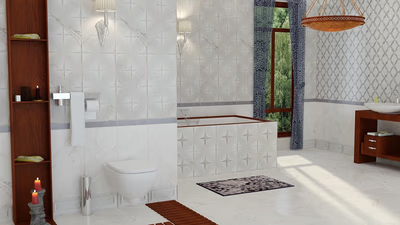
Ceramic tiles offer numerous advantages, making them a popular choice for flooring and wall coverings. Their durability allows them to withstand heavy foot traffic and resist scratches, ensuring longevity when properly maintained. They are water-resistant, making them ideal for moisture-prone areas like kitchens and bathrooms, while their non-porous surface prevents mold and mildew growth. Easy maintenance is another key benefit; regular cleaning requires minimal effort. The variety of sizes, shapes, colors, and patterns available allows for versatile design options that can suit any aesthetic preference. Additionally, ceramic tiles are hygienic as they do not harbor allergens or bacteria, making them suitable for individuals with allergies or respiratory issues. They are free from harmful substances such as VOCs, formaldehyde, and PVC, contributing to a healthier indoor environment. Their excellent heat resistance makes them safe around high-temperature areas without emitting toxic fumes.
Furthermore, ceramic tiles can enhance energy efficiency due to their thermal conductivity properties. Overall, the combination of durability, low maintenance needs, aesthetic versatility, and health benefits positions ceramic tiles as an excellent flooring option in various settings.






